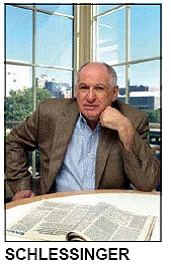In 1991, Joseph Schlessinger, PhD, and Axel Ullrich, PhD, co-founded a small bio-tech company. Taking the first letter of each of their names, they named the company Sugen. Sugen was considered to be one of the early pioneers in the signal transduction field. Many Life Raft Group members will recognize the name Sugen. It is what GIST patients called the experimental drug SU11248 before it had a real name. SU11248 was a mouthful, so patients made up their own name, Sugen, named after the drug manufacturer.
Sugen was acquired by Pharmacia in 2003 and Pharmacia was later acquired by Pfizer. Pfizer completed development of SU11248 bringing the drug to trials for both Gleevec-resistant GIST and advanced kidney cancer. In early 2006 the drug became the first drug to be approved for two cancers at the same time. The drug is now known as Sutent; apparently in tribute to those early pioneers at Sugen.
 On page six of this newsletter, we have published a Yale press release describing recent advances in understanding the mechanisms of KIT signaling. Joseph Schlessinger and his colleagues continue to try to find ways to improve the treatment of GIST.
On page six of this newsletter, we have published a Yale press release describing recent advances in understanding the mechanisms of KIT signaling. Joseph Schlessinger and his colleagues continue to try to find ways to improve the treatment of GIST.
The current generation of KIT inhibitors (drugs like Gleevec and Sutent) work on the inside of GIST cells by blocking the binding of ATP (needed for signaling to occur) in the kinase region of the receptor. This works very well as long as the receptor is not mutated so much that the drug is no longer able to reach the binding pocket in the kinase.
Primary (initial) mutations seldom prevent Gleevec (the drug used as front-line therapy) from reaching the drug/ATP binding pocket. Secondary mutations can develop over time (or they were initially present at low levels and become dominant over time under selective pressure) and change the shape of the receptor enough that Gleevec can no longer bind to the receptor. Sutent and some other drugs have activity against some of the secondary mutations that cause resistance to Gleevec but so far, no drug is known to have activity against all of the many secondary mutations that can occur. Newer drugs like HSP90 inhibitors are trying to overcome this limitation.
In their paper published in the journal, Cell, Dr. Schlessinger and his colleagues describe how two KIT receptors join together to become activated. This process, called dimerization, occurs outside of the cell. Since dimerization and binding of ATP are both required for KIT signaling to occur, both represent drug targets. Blocking ATP binding with Gleevec is a proven approach, but subject to derailment by secondary mutations. Blocking dimerization with a different type of drug that “can form wedge in the KIT molecule”, as noted by Schlessinger, provides a potential approach that could conceivable bypass the secondary mutations that occur in the kinase domain. Since the dimerization area is at or near the exon 9 region of KIT, it will be interesting to see if Schlessinger’s work translates into increased understanding of exon 9 mutations.
According to Schlessinger, “This work provides a roadmap for how to develop new drugs that will overcome the resistance to Gleevec and Sutent that develops in GIST patients and in other diseases driven by activated form of KIT. We are now starting to pursue this idea and raise the necessary funds for this to be accomplished. Although it will take time and quite a lot of funds I am very optimistic that this goal could be accomplished.”



